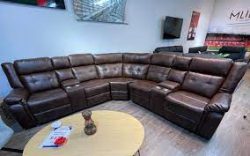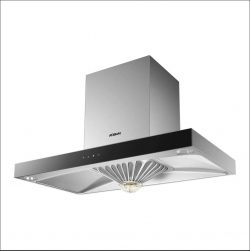Time-Telling Made Simple: The Ultimate Guide to Easy-to-Read Clocks for Seniors
Time profoundly impacts our lives, helping us stay organized, meet appointments, and maintain a sense of routine. For seniors, however, the ability to accurately tell time can become more challenging due to various factors such as visual impairment, cognitive decline, and changes in perception. This is where easy-to-read clocks for seniors become invaluable aids, providing clarity and independence. This comprehensive guide will explore the world of easy to read clock for seniors, their features, benefits, and how to choose the perfect one for your loved ones.
Understanding Seniors’ Time-Telling Needs
As individuals age, their eyesight might be sharper than it once was, making it difficult to read traditional clocks with small numbers and hands. Moreover, conditions like dementia can alter the perception of time, causing confusion and anxiety. Easy-to-read clocks address these concerns by featuring larger, bolder numbers, clear contrast, and additional visual cues.
Key Features of Easy-to-Read Clocks
Large and Bold Numbers: The hallmark of these clocks is the prominently displayed numbers. Seniors can effortlessly tell the time, even from a distance.
High Contrast: A stark contrast between the clock face and the numbers enhances visibility for those with visual impairments.
Clear Clock Hands: Clocks with bold, distinct clock hands eliminate confusion about which hand indicates hours and which indicates minutes.
Digital Displays: Digital clocks provide an alternative with large, easy-to-read numerals. Some even spell out the time, reducing the need for interpretation.
Day and Date: Models that include the day of the week and date help seniors maintain their routines, appointments, and medication schedules.
Automatic Dimming: Some clocks adjust their brightness based on the time of day, preventing a glaring display during nighttime.
Audio Features: Clocks with auditory announcements or chimes offer additional time-telling assistance.
Types of Easy-to-Read Clocks
Analog Clocks:
High-Contrast Clocks: These analog clocks have bold, contrasting colours for easy visibility.
Glow-in-the-Dark Clocks: Numbers and hands are visible in the dark, aiding nighttime time-telling.
Digital Clocks:
Large Digit Clocks: Digital clocks with oversized numerals that can be easily seen from across the room.
Voice-Activated Clocks: Responds to voice commands, announcing the time and date audibly.
Wall Projection Clocks: Projects the time in significant digits onto the wall for effortless reading.
Flip Clocks:
Flip Card Clocks: Utilizes flipping cards with precise numbers that change to display the current time.
Analog and Digital Hybrid: Combines analog clock hands with a digital display for enhanced clarity.
Choosing the Perfect Clock
Consider Visual Needs: Evaluate the senior’s eyesight and any specific visual impairments to determine the ideal level of clarity required.
Cognitive Function: For individuals with dementia, a clock with a clear day and date display can reduce confusion.
Location: Decide whether a wall-mounted clock or tabletop would suit the senior living space.
Extra Features: Determine if additional features like alarms, reminders, or audio announcements would be beneficial.
Style and Aesthetics: While functionality is critical, consider a clock that matches the senior’s preferences and the room’s decor.
Top Easy-to-Read Clock Models
ClearView Day Clock: Features a significant, non-abbreviated day and date display alongside the time. Perfect for seniors with memory issues.
La Crosse Technology Atomic Clock: A wall clock automatically sets itself and offers significant digits for easy reading.
Reacher Dual Alarm Clock: Combines a digital display with voice announcements, adjustable brightness, and dual alarms.
SVINZ Digital Calendar Alarm Day Clock: Designed to show the entire day of the week, time, and date in a clear, easy-to-read format.
Enhancing Seniors’ Independence
Easy-to-read clocks contribute significantly to seniors’ quality of life by fostering a sense of independence. With these clocks, seniors can confidently manage their time, appointments, and daily activities without feeling reliant on others.
Tips for Introducing Easy-to-Read Clocks
Explain the New Clock: When introducing a new clock to a senior, take the time to explain its features and how to read it. Provide clear instructions and encourage them to ask questions.
Placement Matters: Choose a location for the clock that’s easily visible and accessible. Ensure it’s at eye level and not obstructed by furniture or other objects.
Regularly Check and Adjust: Make it a habit to check the clock’s accuracy and adjust it as needed. A reliable clock ensures seniors can trust the information it provides.
Personalize Settings: If the clock has adjustable settings like brightness or alarms, personalize them according to the senior’s preferences and needs.
Encourage Routine: Help the seniors incorporate the clock into their daily routine. For example, using the clock to set meal times or medication reminders can establish a consistent schedule.
Patience is Key: Understand seniors might need time to get used to the new clock. Be patient and offer support as they adapt to this change.
Final Thoughts
Sensory toys target Australia are more than just timekeeping devices; they empower seniors to maintain their independence and confidently navigate their daily lives. These clocks address the specific challenges that aging can bring, offering clear visibility and comprehension of time. You can significantly impact their daily routines and overall well-being by selecting the correct clock, customizing its settings, and guiding seniors through the transition.





















































